
Explain with diagram amplitude modulation, frequency modulation and phase modulation.
Answer
510.6k+ views
HintThe process of changing the amplitude or frequency or phase of the carrier in accordance with the intensity of the signal is known as modulation. Accordingly, the various kinds of modulations are amplitude modulation (AM), frequency modulation (FM), and phase modulation (PM).
Complete Step by step solution
AM wave
The process of adjusting the amplitude of a high frequency carrier wave in accordance with the intensity of the signal is known as the amplitude modulation.
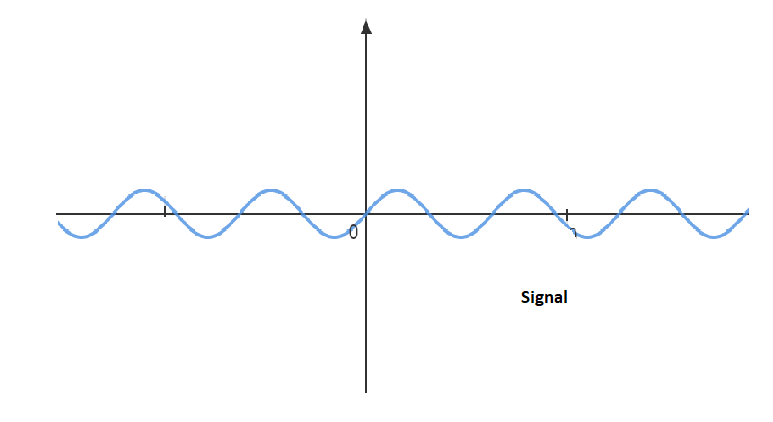
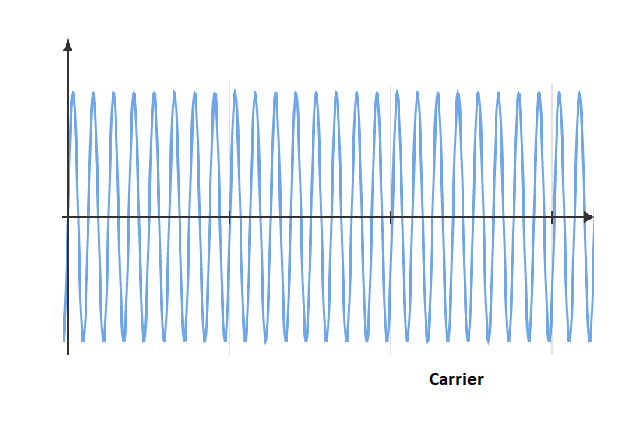
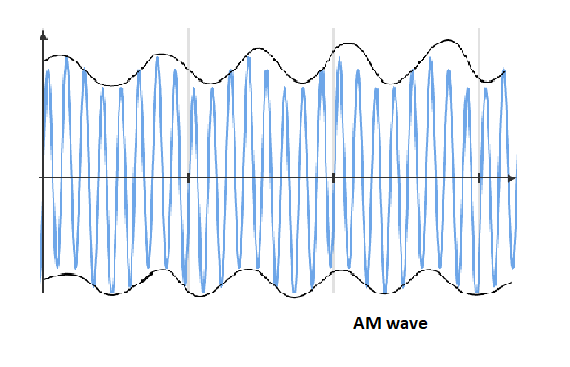
The first figure shows the low-frequency signal and the second figure shows the carrier wave. The third figure represents the amplitude-modulated wave. The amplitude of the carrier wave changes in accordance with the amplitude of the signal.
The envelope of the carrier wave varies as the modulating signal. But the frequency and phase of the carrier wave remain unchanged.
Frequency modulated wave
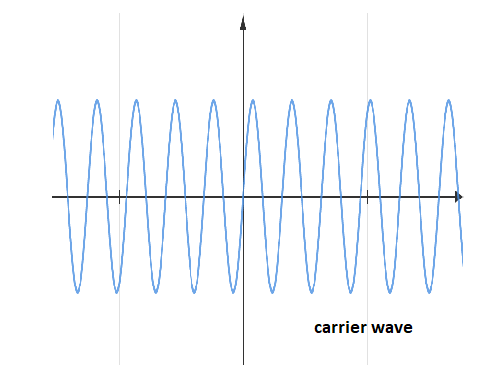
The above figure shows the carrier wave of the frequency-modulated wave
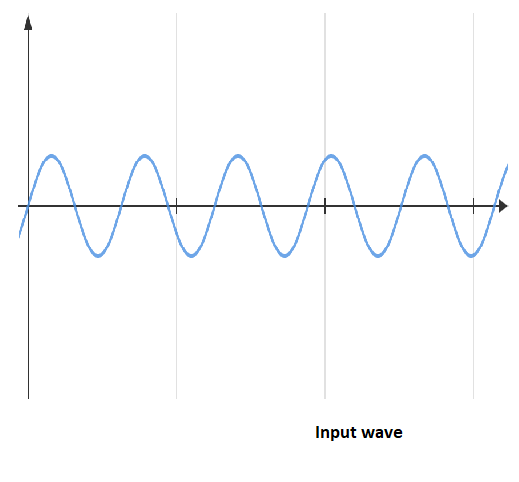
The above figure shows the input signal wave for frequency modulation.
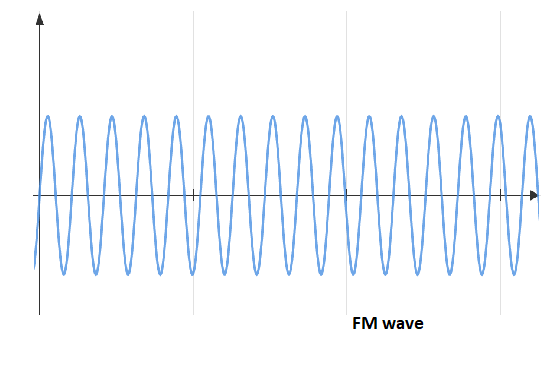
The above figure shows the frequency-modulated wave.
Here the frequency of the input wave is varied to encode the information with a carrier wave. This is in contrast to the amplitude modulation where the frequency remains constant and amplitude varies. Here in frequency modulation, the amplitude remains the same but the frequency of the wave varies. Frequency modulation is used for telecommunication. For broadcasting music, voices, etc. frequency modulation is used.
Phase modulated wave
Here the signal is encoded with the variations in the instantaneous phase of the carrier wave. The phase of the carrier wave changes in accordance with the change in the voltage in the input signal wave. Here the amplitude and the frequency of the wave will remain unchanged. Only the phase of the carrier wave changes with respect to the input signal wave. The final result of phase modulation is similar to the frequency modulation.
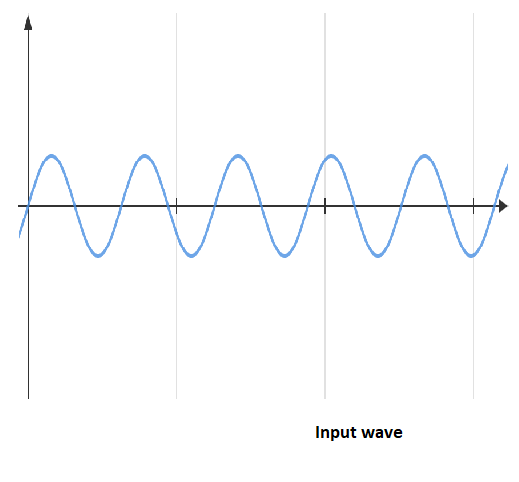
The above figure shows the input wave for phase modulation
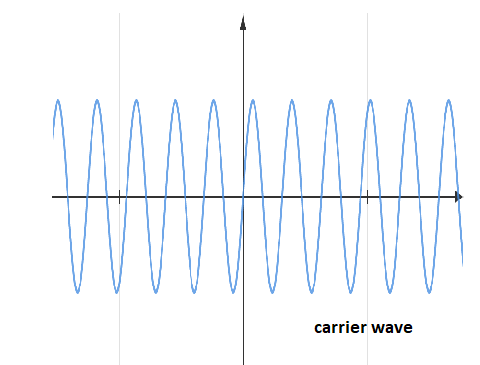
The above figure shows the carrier wave for phase modulation.
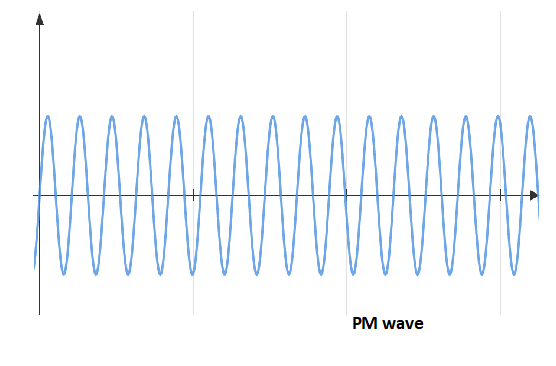
The figure shows the phase-modulated wave.
Note:
The low-frequency electric signals cannot be transmitted to very large distances. This is because the energy associated with a low-frequency signal will be very small. To carry the audio frequency electric signal to large distances, a high-frequency carrier wave is used. Hence we superimpose the audio signal on a high-frequency carrier wave. This process is called modulation.
Complete Step by step solution
AM wave
The process of adjusting the amplitude of a high frequency carrier wave in accordance with the intensity of the signal is known as the amplitude modulation.



The first figure shows the low-frequency signal and the second figure shows the carrier wave. The third figure represents the amplitude-modulated wave. The amplitude of the carrier wave changes in accordance with the amplitude of the signal.
The envelope of the carrier wave varies as the modulating signal. But the frequency and phase of the carrier wave remain unchanged.
Frequency modulated wave

The above figure shows the carrier wave of the frequency-modulated wave

The above figure shows the input signal wave for frequency modulation.

The above figure shows the frequency-modulated wave.
Here the frequency of the input wave is varied to encode the information with a carrier wave. This is in contrast to the amplitude modulation where the frequency remains constant and amplitude varies. Here in frequency modulation, the amplitude remains the same but the frequency of the wave varies. Frequency modulation is used for telecommunication. For broadcasting music, voices, etc. frequency modulation is used.
Phase modulated wave
Here the signal is encoded with the variations in the instantaneous phase of the carrier wave. The phase of the carrier wave changes in accordance with the change in the voltage in the input signal wave. Here the amplitude and the frequency of the wave will remain unchanged. Only the phase of the carrier wave changes with respect to the input signal wave. The final result of phase modulation is similar to the frequency modulation.

The above figure shows the input wave for phase modulation

The above figure shows the carrier wave for phase modulation.

The figure shows the phase-modulated wave.
Note:
The low-frequency electric signals cannot be transmitted to very large distances. This is because the energy associated with a low-frequency signal will be very small. To carry the audio frequency electric signal to large distances, a high-frequency carrier wave is used. Hence we superimpose the audio signal on a high-frequency carrier wave. This process is called modulation.
Recently Updated Pages
Class 11 Question and Answer - Your Ultimate Solutions Guide

Master Class 11 Accountancy: Engaging Questions & Answers for Success

Master Class 11 Physics: Engaging Questions & Answers for Success

Master Class 11 Business Studies: Engaging Questions & Answers for Success

Master Class 11 Maths: Engaging Questions & Answers for Success

Master Class 11 Chemistry: Engaging Questions & Answers for Success

Trending doubts
1 ton equals to A 100 kg B 1000 kg C 10 kg D 10000 class 11 physics CBSE

Difference Between Prokaryotic Cells and Eukaryotic Cells

One Metric ton is equal to kg A 10000 B 1000 C 100 class 11 physics CBSE

What is the opposite of entropy class 11 chemistry CBSE

Proton was discovered by A Thomson B Rutherford C Chadwick class 11 chemistry CBSE

1 Quintal is equal to a 110 kg b 10 kg c 100kg d 1000 class 11 physics CBSE




